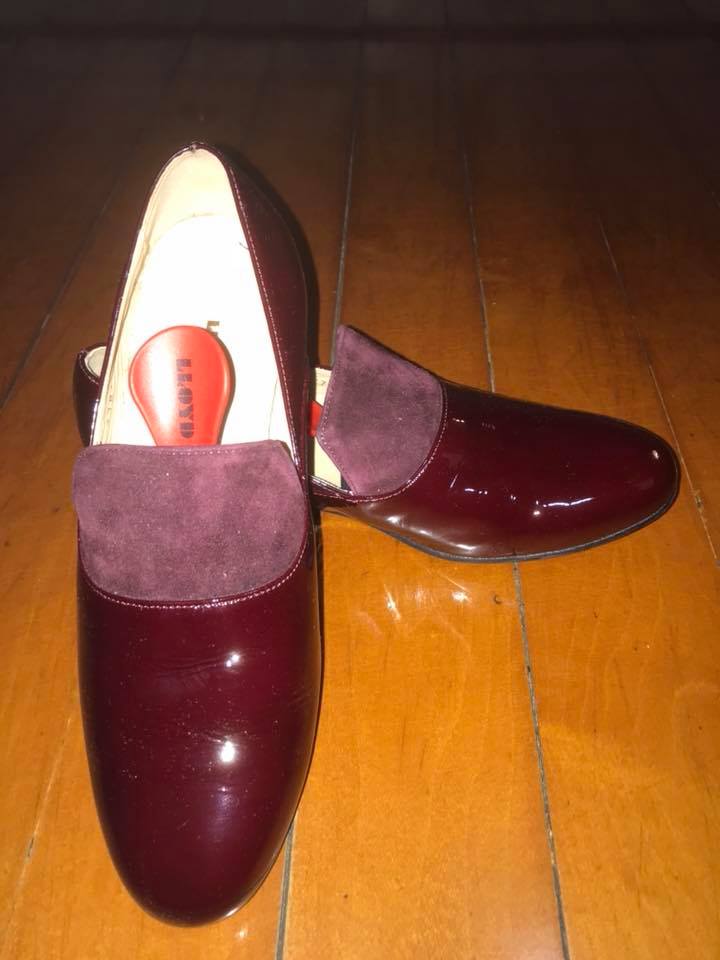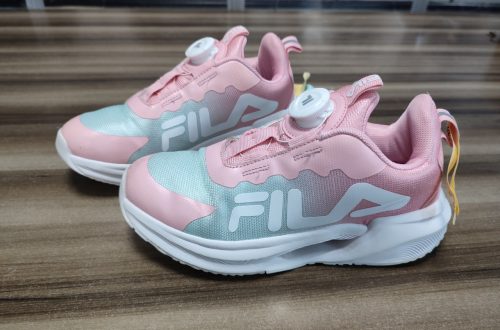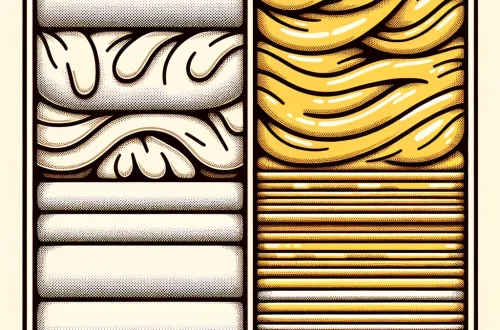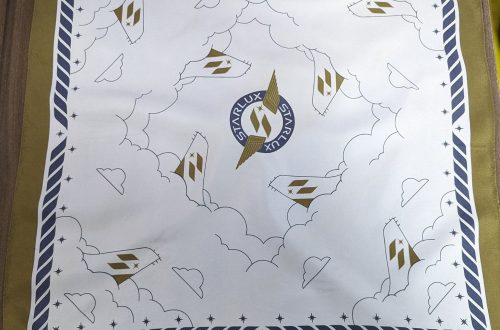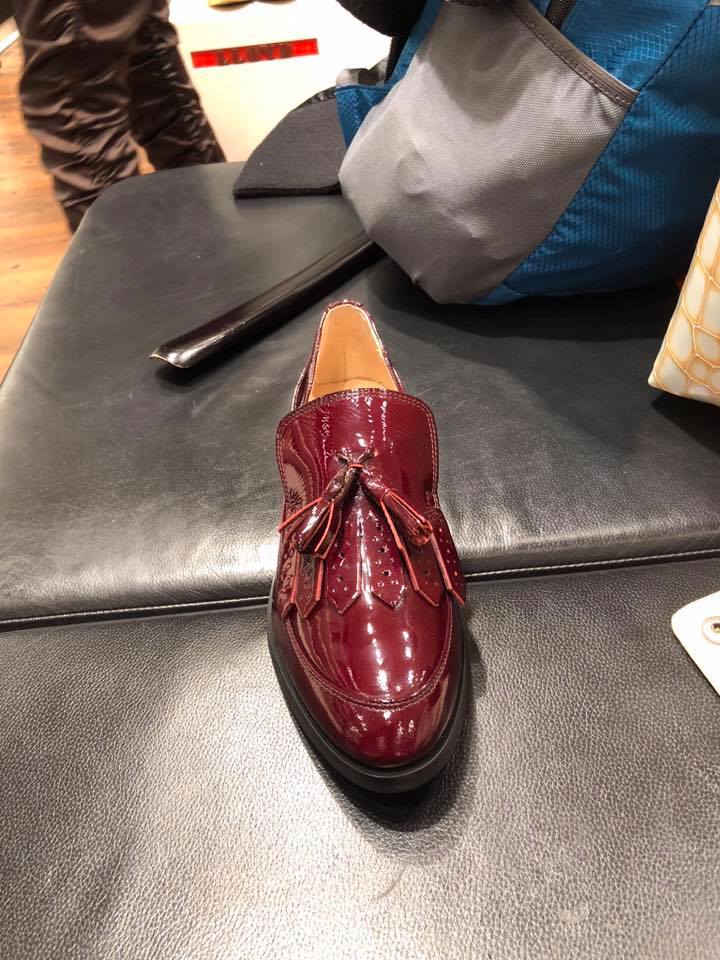
淺談漆皮
淺談漆皮
patent leather
漆皮在我們的現代生活中,佔有很重要的份量,用漆皮來做的鞋子,歷久不衰.不管是世界級的名牌,到一般的學生鞋或是軍鞋,也有不少名牌也用軟漆皮做皮包,更有人用漆皮來做服裝,因為漆皮的光澤非常搶眼,非常適合從事表演藝術人士的需求。
漆皮也可以叫做鏡面皮,因為他的表面光滑可以與明鏡相比。漆皮的英文名字是patent leather,而patent 是專利的意思,為什麼會用專利這個名稱,來形容漆皮呢?這是有一個很長遠的故事.在西元1793年,英國伯明翰有一個發明家叫做漢德Hand,聲稱他可以製作可以防水滲透又可以彎曲而帶有釉光澤的皮革,容易清潔及擦乾淨,因此得到專利。後來也有幾個英國人,分別在1799年,1805年也得到在製造過程上的專利。由於當時製革技術只有植物鞣做法,所以能夠把皮做得亮晶晶,是一個大突破,這樣就把漆皮叫成patent leather。
但是,真正把漆皮做成商品而成功的是一個美國人,他的名字是塞斯佰登,Seth Byoden, 1819年9月20日,他用油亜麻仔油linseed oil為基礎組合的塗層在植鞣牛皮上,做出帶有高光澤的效果,用來做男士的高統靴,一舉成名,但是很諷刺的是,他從來沒有為自己的製作申請過專利,而patent leather 這個英文名稱,卻沿用至今,當然現在製造漆皮的技術已経不可同日而語,而且在鉻鞣皮上做漆皮塗飭,也是容易的多,視客戶要求,做軟做硬挺,技術上都沒有難度,從軍鞋到仿芭蕾舞鞋都可以。
而我們為什麼用漆皮這個名稱,主要是中國人的漆器歷史悠久,而且光澤亮麗,所以很順口的就把patent leather叫成漆皮,否則就會叫偑騰皮,更可能直翻成專利皮,搞得大家一頭霧水。
漆皮是一種很容易保養的皮,通常只要用溼布就可以清潔,所以很多學校甚至於軍人,都會用到黑色漆皮鞋,由於皮革化工的進步,在柔軟的綿羊皮上也可以做漆皮效果,而塗層可以薄到0.03mm,所以不會影響到皮革手感。
關於漆皮製造過程,與一般塗料皮大致相同,只不過在封底磨皮時要求更平滑,而且在淋漆時要注意不能產生汽泡,如果用噴漆方式,一定要用airless 噴槍。
如果大家對於漆皮想要多瞭解一點,尤其在應用上及物理性質方面,我可以另外解釋。
市面上有很多的漆皮產品,是用合成皮貼膜方式製造,而不是用真皮做的,所以贖買時要小心,不要用高價買下廉價的合成皮,另外合成皮一般壽命較短,皮面容易脫落。
照片中這雙鞋是德國品牌LLOYD用小羊皮漆皮,搭配羊反絨皮Kid Suede用在腳背上,內裡也是全真皮,軽,軟,薄兼具,是舒適走路的好選擇。
雖然是德國老牌,但是義大利製造,這是歐洲一體化的表現。
大部分真皮是用淋幕式,或是噴塗方式,做表面處理,磨皮及填充很重要,才能有平滑的表面。合成纖維皮是用貼膜為主。
A Brief Discussion on Patent Leather
Importance in Modern Life
Patent leather holds a significant place in our daily life, especially in the fashion of shoes that never go out of style. From high-end designer brands to common student shoes and military footwear, patent leather is a popular choice. The material is also used in handbags by renowned brands and even in clothing, particularly because its sheen is eye-catching, meeting the needs of performing artists.
What is Patent Leather?
Known for its smooth, mirror-like finish, patent leather is appropriately named. The term “patent” refers to an invention being exclusive to the inventor for a certain period, which in this case, can be traced back to a long story. In 1793, an inventor named Hand from Birmingham, UK, claimed to have developed a type of leather that was waterproof, shiny, and easy to clean, earning him a patent. Later, a few more British people received patents for manufacturing processes in 1799 and 1805. At that time, the leather industry mostly used vegetable tanning, so producing shiny leather was a significant breakthrough, leading to the name “patent leather.”
However, Seth Boyden, an American, was the first to successfully commercialize the invention. On September 20, 1819, he applied a linseed-oil-based coating to vegetable-tanned leather, creating a high-gloss effect used in men’s boots. Ironically, he never patented his process, but the term “patent leather” persists to this day.
Why “Patent Leather”?
The Chinese term for patent leather, “Qi Pi” (漆皮), derives from China’s long history of lacquerware, which is also shiny. If not for this term, it might have been directly translated, causing confusion.
Maintenance and Uses
Patent leather is low-maintenance; usually, a damp cloth is sufficient for cleaning. This makes it popular for school and military footwear. With advancements in chemical engineering, patent leather effects can now be achieved on soft sheepskin, with a coating as thin as 0.03mm, without affecting the leather’s feel.
Manufacturing Process
The manufacturing of patent leather is similar to that of pigmented leather, except the surface has to be smoother, and care has to be taken not to produce bubbles during the lacquering. If spraying is used, an airless spray gun is recommended.
Buyer’s Caution
Many patent leather products on the market are made of synthetic leather with a film, not genuine leather. Be cautious not to pay a high price for low-quality synthetic leather, which generally has a shorter lifespan and is prone to peeling.
Featured Product
The shoes in the photo are from the German brand LLOYD, made with patent sheepskin and paired with Kid Suede on the vamp. The lining is also all genuine leather, making the shoes light, soft, and thin—a comfortable choice for walking. Though a German brand, the shoes are made in Italy, exemplifying European integration.
If you’d like to know more about patent leather, especially its applications and physical properties, feel free to ask for further explanations.
